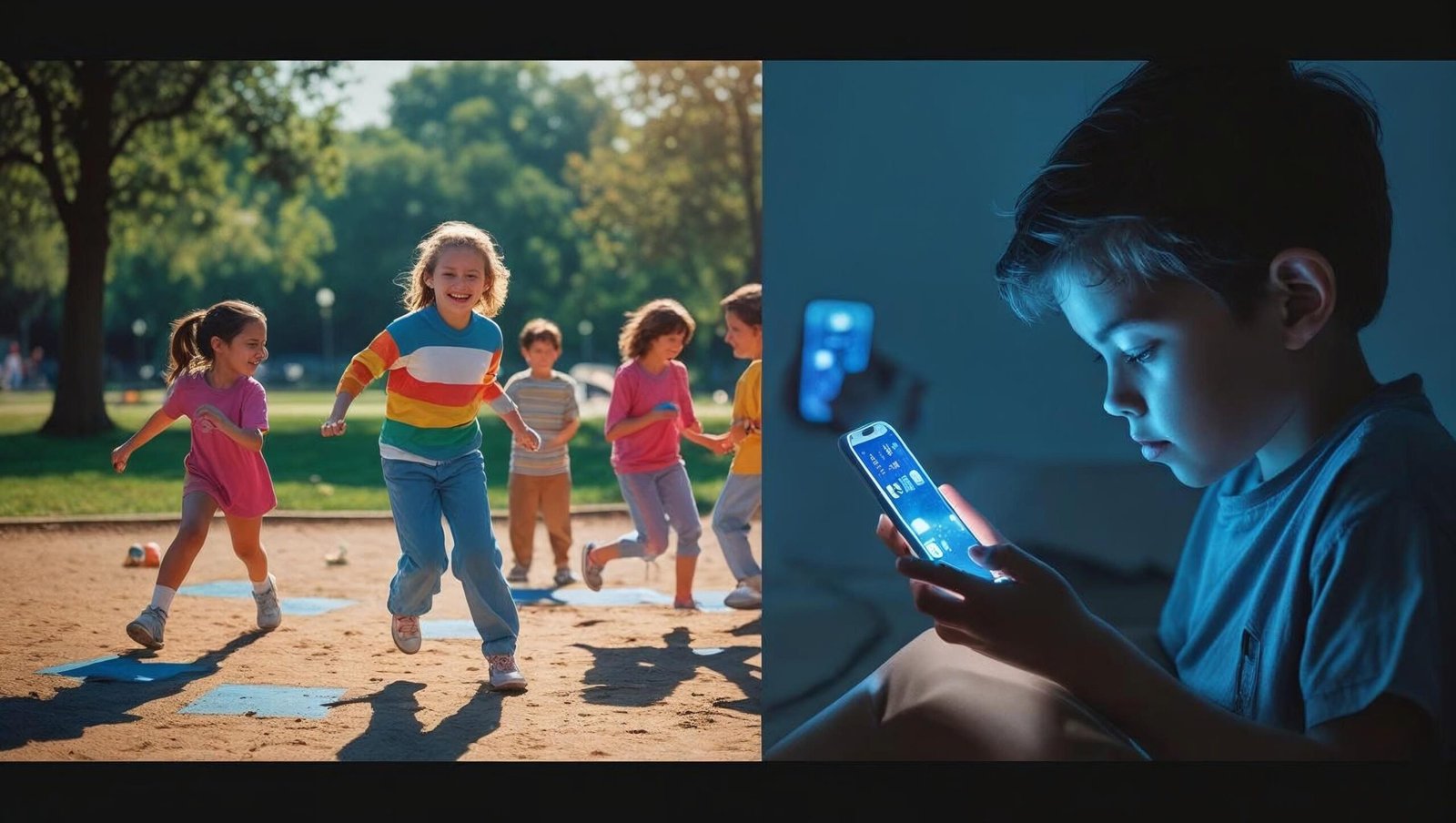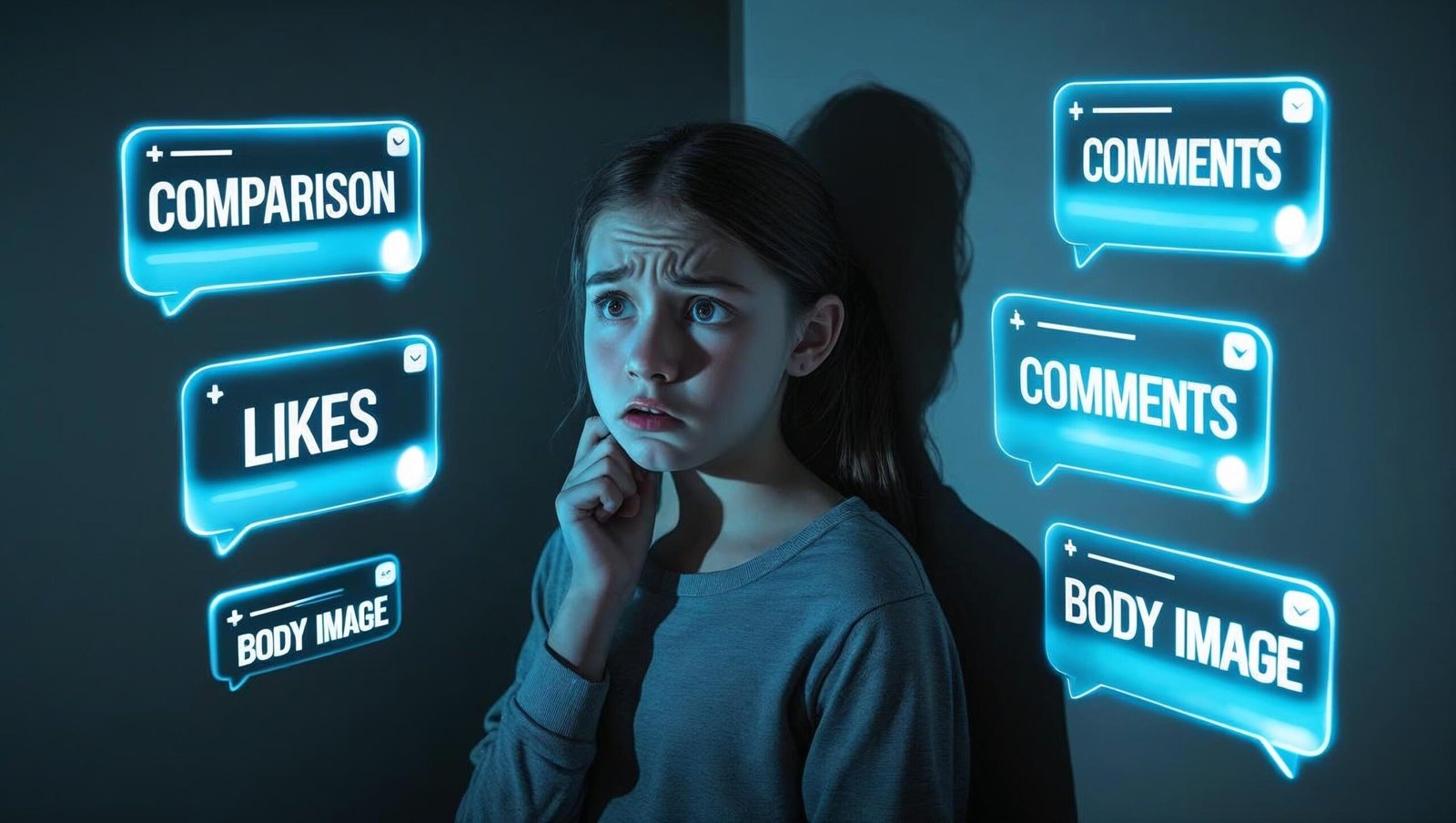Introduction
The Anxious Generation by Jonathan Haidt is not just a book—it’s a cultural warning, a psychological mirror, and a deeply researched narrative into what has gone wrong with childhood in the digital age. Through meticulous data, historical analysis, and poignant storytelling, Haidt uncovers the perilous effects of smartphones and social media on the minds of the young.
With mental illness rising among teenagers and anxiety becoming a norm rather than an exception, this book provides answers, accountability, and a hopeful call to action.

1. Understanding the Premise of The Anxious Generation by Jonathan Haidt
The Anxious Generation by Jonathan Haidt begins by setting the historical context of childhood. Haidt explains how modern parenting, despite its good intentions, inadvertently paved the way for a fragile generation. From hyper-vigilant “safetyism” to increased screen time, Haidt draws a direct line between declining resilience and rising anxiety levels.
He terms this the Great Rewiring—a shift not only in parenting but also in the architecture of childhood itself. The book examines how digital devices, especially smartphones, became the primary social arena for adolescents.
2. The Great Rewiring: What Changed in Childhood?
In The Anxious Generation by Jonathan Haidt, the author outlines how the structure of play, education, and social interaction has been radically altered. Children once thrived on outdoor play, unstructured exploration, and face-to-face socialising. Today, their world is indoors, sedentary, and dominated by filtered images and algorithm-driven validation.
This rewiring—triggered between 2010 and 2015—saw a surge in:
-
Screen time over 6 hours/day
-
Social media use among pre-teens
-
Isolation and lack of community play
Haidt supports these observations with global data, proving this phenomenon is not limited to America.
3. Social Media and Its Psychological Toll
Perhaps the most critical insight in The Anxious Generation by Jonathan Haidt is the undeniable link between social media and the mental health crisis. Haidt argues that platforms like Instagram and TikTok:
-
Erode self-esteem through constant comparison
-
Short-circuit emotional development
-
Addict children to dopamine loops
The impact is especially harsh on girls, who experience cyberbullying, body image distortions, and exclusion more severely. Boys, too, are affected—but in different ways, such as isolation, gaming addiction, and reduced academic performance.
4. The Myth of Screen Time Neutrality
In The Anxious Generation by Jonathan Haidt, Haidt confronts a common myth: not all screen time is created equal. Educational apps differ vastly from endless YouTube scrolling or toxic comment threads on Snapchat.
He categorises screen time into:
-
Passive consumption: Worst impact (TikTok reels, binge-watching)
-
Interactive consumption: Moderate (Video games with friends)
-
Productive use: Least harmful (coding, blogging, creative editing)
By establishing these distinctions, Haidt urges parents to look beyond just hours and consider quality of screen usage.
5. The Decline of Independent Play
A deeply troubling insight from The Anxious Generation by Jonathan Haidt is the death of unmonitored, outdoor play. Fearful parents, urban design, and legal overreach have collectively robbed children of their natural learning grounds.
This lack of independent exploration stunts:
-
Risk-taking skills
-
Conflict resolution
-
Social adaptability
Haidt links this directly to the rise of anxiety and dependence in adolescence, especially in Western societies.

6. The Data Behind the Crisis
Haidt is at his best when he brings hard numbers. In The Anxious Generation by Jonathan Haidt, he presents shocking statistics:
-
A 60% rise in teen depression since 2010
-
Suicide rates among girls doubling between 2009–2019
-
Sharp drops in in-person friend interactions
These data points aren’t just American. Haidt draws from Canada, the UK, Australia, and Nordic countries, suggesting a global epidemic driven by common tech usage patterns.
7. The Road Ahead: Haidt’s Four Key Solutions
Towards the end of The Anxious Generation by Jonathan Haidt, the author doesn’t just dwell in despair—he offers a hopeful framework of change:
a. Delay Smartphone Access
No smartphones before high school. Haidt suggests enforcing minimum age restrictions and reintroducing “dumb phones.”
b. Ban Social Media for Children
Until age 16, children should be kept off platforms like Instagram, Snapchat, and TikTok.
c. Restore Free Play
Urban planners, schools, and parents must reclaim public spaces for unstructured, safe, independent play.
d. Rebuild Schools for In-Person Interaction
Reduce screens in classrooms. Encourage more debates, sports, group projects, and field trips.
These solutions, if implemented, could reverse much of the emotional damage inflicted by the great rewiring.
Chapter-wise Summary of The Anxious Generation by Jonathan Haidt
Chapter 1: Childhood in Crisis
How smartphones and overprotective parenting weakened emotional growth.
Chapter 2: The Great Rewiring
Technological and social changes rewiring childhood since 2010.
Chapter 3: Smartphones vs. Mental Health
Data-backed analysis linking screen use to teen depression.
Chapter 4: Gendered Effects
Why girls suffer more on social media, and boys more through isolation.
Chapter 5: Play is Not a Luxury
The psychology of independent play and its lifelong benefits.
Chapter 6: Schools and Tech
How digital learning often harms attention, memory, and collaboration.
Chapter 7: What Can Be Done
A practical roadmap to rescue childhood.
A Closer Look into Cultural Shifts Addressed in The Anxious Generation by Jonathan Haidt
One of the most powerful elements of The Anxious Generation by Jonathan Haidt is its diagnosis of cultural transformation. Haidt doesn’t merely point fingers at technology—he dissects how modern Western society has progressively adopted norms that undermine autonomy, risk-taking, and real-world bonding. The book reveals how societal shifts—many of them well-intentioned—have inadvertently created an emotional vacuum for today’s youth.
For instance, Haidt critiques the overemphasis on academic success at the cost of experiential learning. Schools today push children to excel in structured, screen-based environments, which leaves little room for spontaneity, creative problem-solving, or outdoor interaction. In his analysis, this transition away from embodied learning further alienates children from their environment, something rarely questioned in mainstream education discourse.
In The Anxious Generation by Jonathan Haidt, there’s a subtle but urgent call to shift the paradigm—moving away from control and efficiency to presence and adaptability. He posits that unless adults radically rethink how they raise, teach, and mentor children, the anxiety epidemic will only deepen in the years to come.

Parenting in the Age of Digital Dependency
Another cornerstone of The Anxious Generation by Jonathan Haidt is the transformation of parenting itself. Haidt critiques the modern ideal of the “perfect parent” who monitors every step of a child’s life. This, coupled with the omnipresence of smartphones, has created what he calls a ‘surveillance culture.’ Children are no longer trusted to explore, fail, and recover on their own terms.
Interestingly, Haidt juxtaposes this style with what he calls “anti-fragile” parenting. This model encourages discomfort, ambiguity, and small doses of failure as essential ingredients for emotional strength. Haidt draws inspiration from ancient cultures where child-rearing emphasized communal interaction, physical activity, and gradual autonomy.
In The Anxious Generation by Jonathan Haidt, he proposes that a truly resilient child cannot be manufactured through apps or excessive tutoring. Instead, they are molded through nature walks, playground arguments, scraped knees, and real-world problem-solving. Haidt’s appeal is direct: let children breathe, stumble, explore—and do so away from the harsh gaze of algorithmic judgment.
The Global Reach of the Digital Childhood Crisis
Though much of the data in The Anxious Generation by Jonathan Haidt draws from the United States, the problem is undeniably global. Countries such as Canada, Australia, and those in Western Europe exhibit similar trends: increased rates of adolescent depression, social withdrawal, sleep deprivation, and suicidal ideation.
Haidt is especially alarmed at how quickly societies across the world embraced smartphones and social media without applying the same caution they would to substances like alcohol or tobacco. He questions why there was no public health campaign, no longitudinal research mandated, no systemic regulation before these technologies were handed over to vulnerable age groups.
Furthermore, in The Anxious Generation by Jonathan Haidt, we see how the mental health crisis does not respect borders. Even in countries with high human development indexes, like Norway or Japan, teens are reporting record-high levels of psychological distress—an eerie confirmation of the book’s thesis.
The Digital Panopticon: Surveillance, Control, and Fear
One of the most poignant critiques in The Anxious Generation by Jonathan Haidt is how smartphones have turned adolescence into a digital panopticon—a space where everyone is watched, judged, and categorized in real-time. Every like, comment, or selfie is a public performance, and every mistake becomes an indelible mark in the cloud.
This constant exposure leads to chronic self-monitoring, which inhibits authentic personality development. Children no longer experiment with identities in safe spaces; instead, they become performers who fear cancellation, ridicule, or ostracism. Haidt notes that this dynamic is especially devastating during puberty—a phase where identity exploration is crucial.
In The Anxious Generation by Jonathan Haidt, the reader is invited to consider the long-term implications of this public scrutiny. What happens when entire generations grow up unable to disconnect from the gaze of their peers and followers? What happens when privacy becomes a relic and authenticity becomes a risk?
Social Media’s Exploitation of Psychological Vulnerabilities
While technology can be a tool for growth, The Anxious Generation by Jonathan Haidt does not shy away from exposing how platforms intentionally exploit cognitive weaknesses. Haidt discusses persuasive design—the strategic use of notifications, intermittent rewards, infinite scrolls, and algorithmic targeting to hijack user attention.
Children, still in developmental stages, are especially susceptible. Their prefrontal cortex—the brain’s center for reasoning and impulse control—is not fully developed. Platforms take advantage of this, often creating feedback loops that encourage compulsive use, validation addiction, and emotional dependence.
In The Anxious Generation by Jonathan Haidt, we learn that what’s at stake isn’t merely distracted minds—but broken developmental pathways. The book makes a strong case for treating excessive social media usage not merely as a behavioral problem, but as a neurodevelopmental hazard.

Psychological Concepts Interwoven with Haidt’s Argument
Haidt draws heavily on concepts from psychology to ground his arguments. From Jean Twenge’s studies on iGen to Jonathan Haidt’s own research on moral psychology, the book reflects an interdisciplinary approach. Terms like “emotional regulation,” “learned helplessness,” and “dopaminergic reward cycles” aren’t just buzzwords—they are clinical insights pointing toward a broader public health emergency.
In The Anxious Generation by Jonathan Haidt, there’s a unique blending of hard science with cultural commentary. The book moves fluidly between discussing teenage neurobiology and examining how societal values (like hyper-competitiveness or toxic productivity) worsen the impact of digital technologies.
This fusion of disciplines makes the book invaluable for educators, mental health professionals, and tech ethicists alike.
The Educational Fallout of the Screen-Based Lifestyle
The Anxious Generation by Jonathan Haidt also ventures into classrooms—environments where the promise of “digital learning” has not been met with the expected gains. Haidt points to studies showing that students who use digital devices in class often retain less information, perform worse on tests, and experience higher stress.
Online classrooms, especially post-pandemic, have become a double-edged sword. While offering convenience, they reduce attention span, eliminate interpersonal feedback loops, and make it easier to disengage. The teacher-student dynamic, once a cornerstone of formative education, is now often mediated through screens.
In The Anxious Generation by Jonathan Haidt, the author stresses that schools must become sanctuaries of real-world interaction. From Socratic dialogue to physical education, he envisions a classroom where screens are tools—not environments.
Tech Corporations and the Ethics of Innovation
A rarely discussed yet vital component of The Anxious Generation by Jonathan Haidt is its moral indictment of big tech corporations. Haidt questions the ethics of monetizing attention and mental vulnerability. He calls out the silence and inaction of companies that are fully aware of the harm yet continue to design apps that maximize addiction.
The book insists that responsibility must not rest solely on parents. Policymakers, engineers, and business leaders must take accountability for their creations. In many ways, Haidt frames this as a civilizational crisis: when profit trumps well-being, what kind of society are we engineering?
In The Anxious Generation by Jonathan Haidt, this theme of moral clarity runs deep. Haidt doesn’t just highlight problems—he invites action from every level of influence, from the household to the boardroom.
Why This Book Matters Right Now
In a world where attention is a commodity and childhood is increasingly mediated through glass screens, The Anxious Generation by Jonathan Haidt is a manifesto of resistance. It calls for slowing down, for trusting children, for embracing discomfort, and for re-humanising the most delicate phase of life.
This book isn’t just about parenting or psychology—it’s about reclaiming the soul of childhood. It reminds us that anxiety isn’t inevitable, but often a product of environments we create.
In reading The Anxious Generation by Jonathan Haidt, we are not merely learning about the causes of emotional decay—we are being challenged to choose a different path.

Final Reflections
What makes The Anxious Generation by Jonathan Haidt stand apart is not just its timely topic or data-driven analysis—it is the sincere urgency in its prose. Haidt is not writing from a place of detached observation. He is writing as a father, a teacher, and a thinker genuinely worried about what kind of world we’re passing on.
This book is not a call to ban technology or glorify the past. Instead, it’s a reasoned appeal to use wisdom, moderation, and courage in guiding our children. We need not abandon progress to protect the next generation—we just need to be more mindful of its cost.
In closing, The Anxious Generation by Jonathan Haidt is essential reading for anyone who cares about the future. It is a rare book that blends research with heart and data with direction.
Powerful Insights from The Anxious Generation by Jonathan Haidt
-
Childhood has moved online, and it’s emotionally malnourishing.
-
Safetyism might be protective, but it’s making kids fragile.
-
Mental health isn’t just biological—it’s deeply cultural and environmental.
-
Children today have fewer friends, less freedom, and more fear.
FAQs
Q1. What is the main thesis of The Anxious Generation by Jonathan Haidt?
The book argues that smartphones and social media have drastically altered childhood development, contributing to rising mental health issues.
Q2. Is The Anxious Generation by Jonathan Haidt based on scientific research?
Yes. Haidt supports his thesis with a robust array of global statistics, peer-reviewed studies, and psychological research.
Q3. Who should read The Anxious Generation by Jonathan Haidt?
Parents, educators, policymakers, and anyone concerned about children’s mental health in the digital era.
Q4. Does Haidt offer solutions in the book?
Yes. He proposes delaying smartphone access, banning social media until age 16, and promoting unstructured play and offline schooling.
Q5. Is this problem limited to America?
No. The book draws data from across the globe, indicating a widespread and systemic issue.
Conclusion
The Anxious Generation by Jonathan Haidt is a timely alarm bell that cuts through the noise of parental confusion and digital optimism. It presents a clear-eyed analysis of how the “great rewiring” of childhood is harming our most vulnerable generation.
Haidt’s voice is not just critical—it’s compassionate. He urges society to pause, rethink, and reclaim the joy of growing up in the real world.
This book is not just informative—it is transformative. It forces us to re-evaluate our reliance on digital devices and reignite the natural instincts of play, presence, and personal connection.
Let this review be your nudge to pick up the book, reflect, and act.
Published by: shubhanshuinsights.com
Your trusted voice in long-form nonfiction insights and book wisdom.
Comment Below:
Do you think smartphones are harming our children’s mental health? Have you implemented any digital boundaries in your family? Share your story with us.